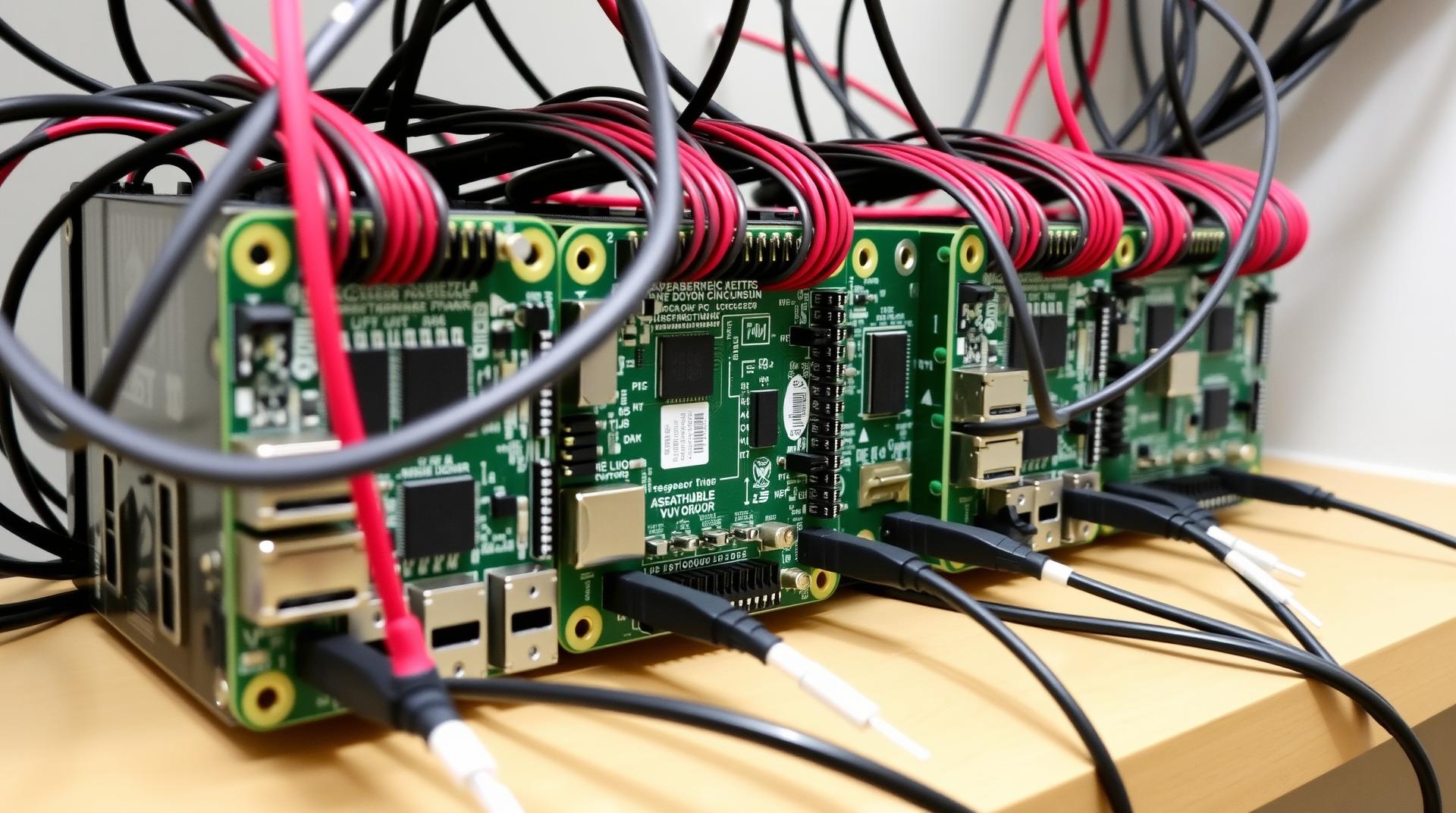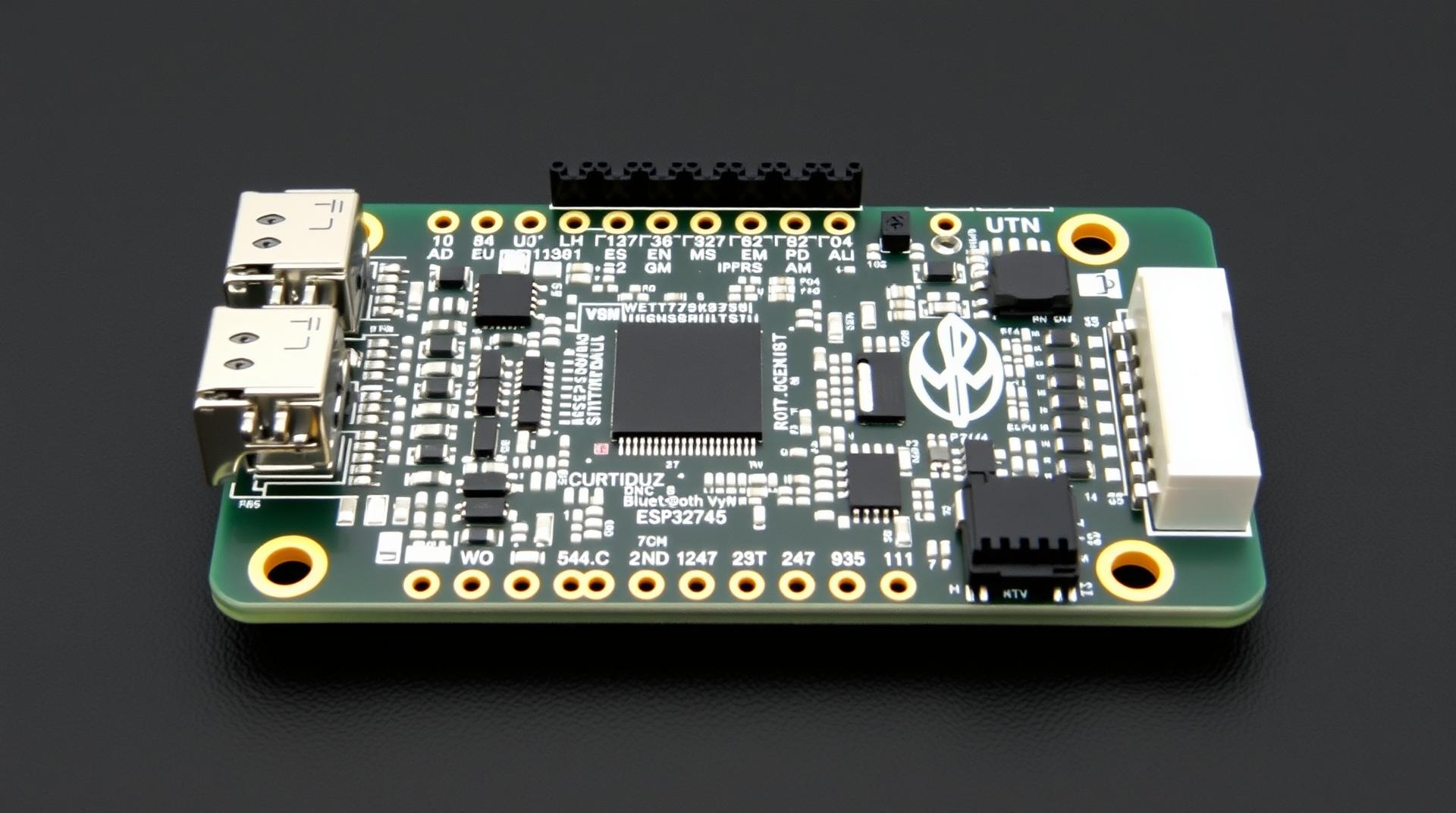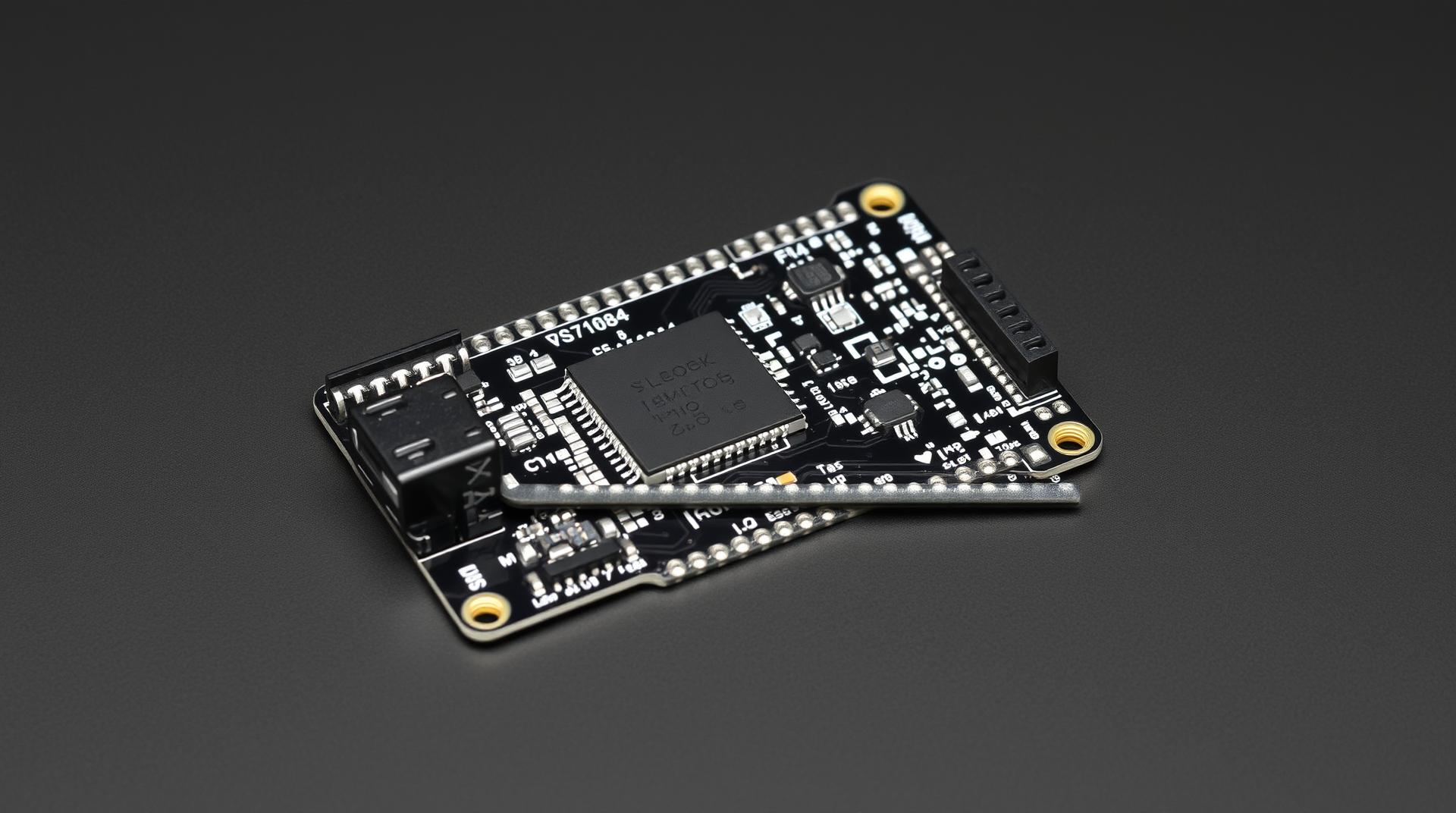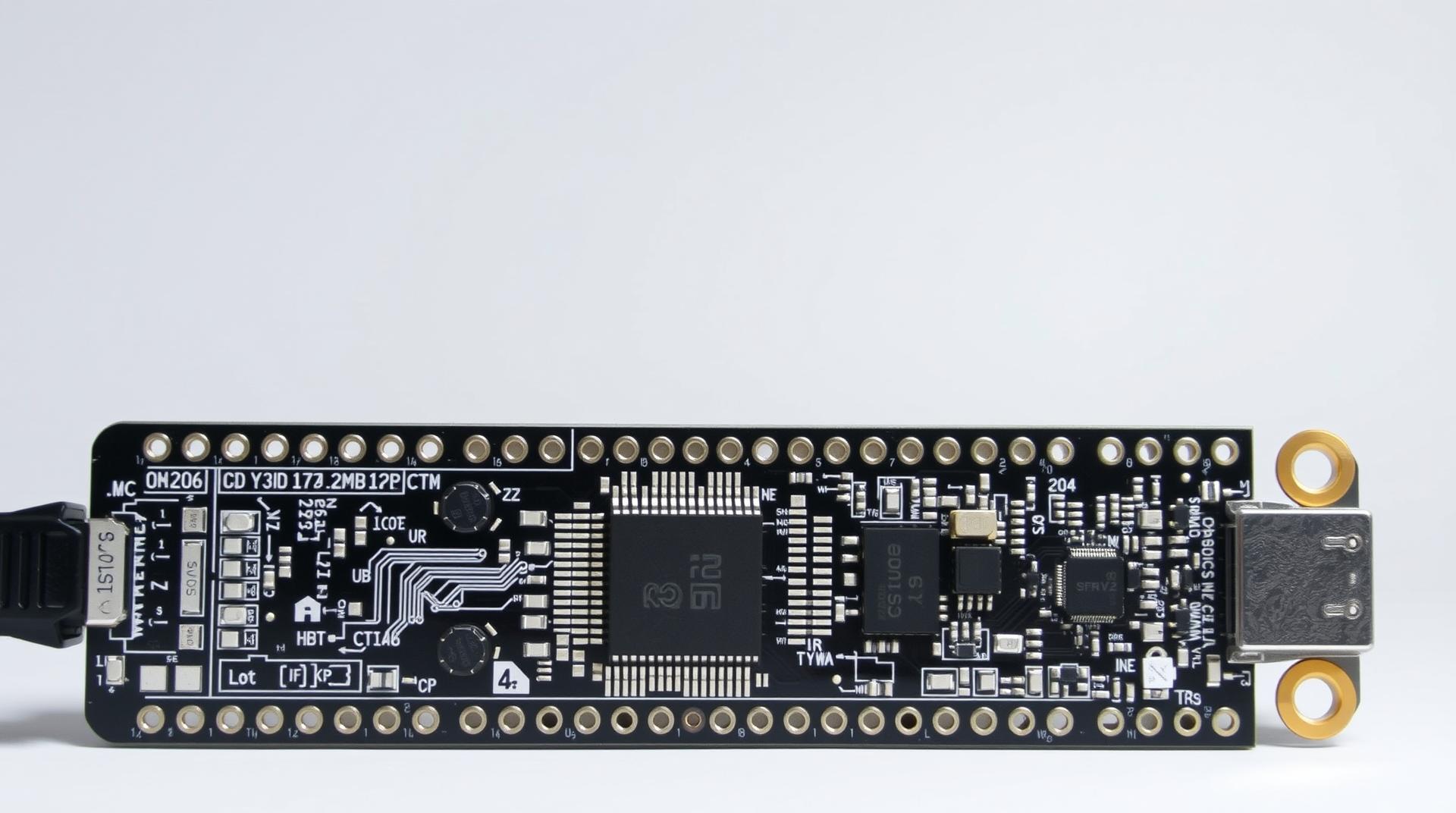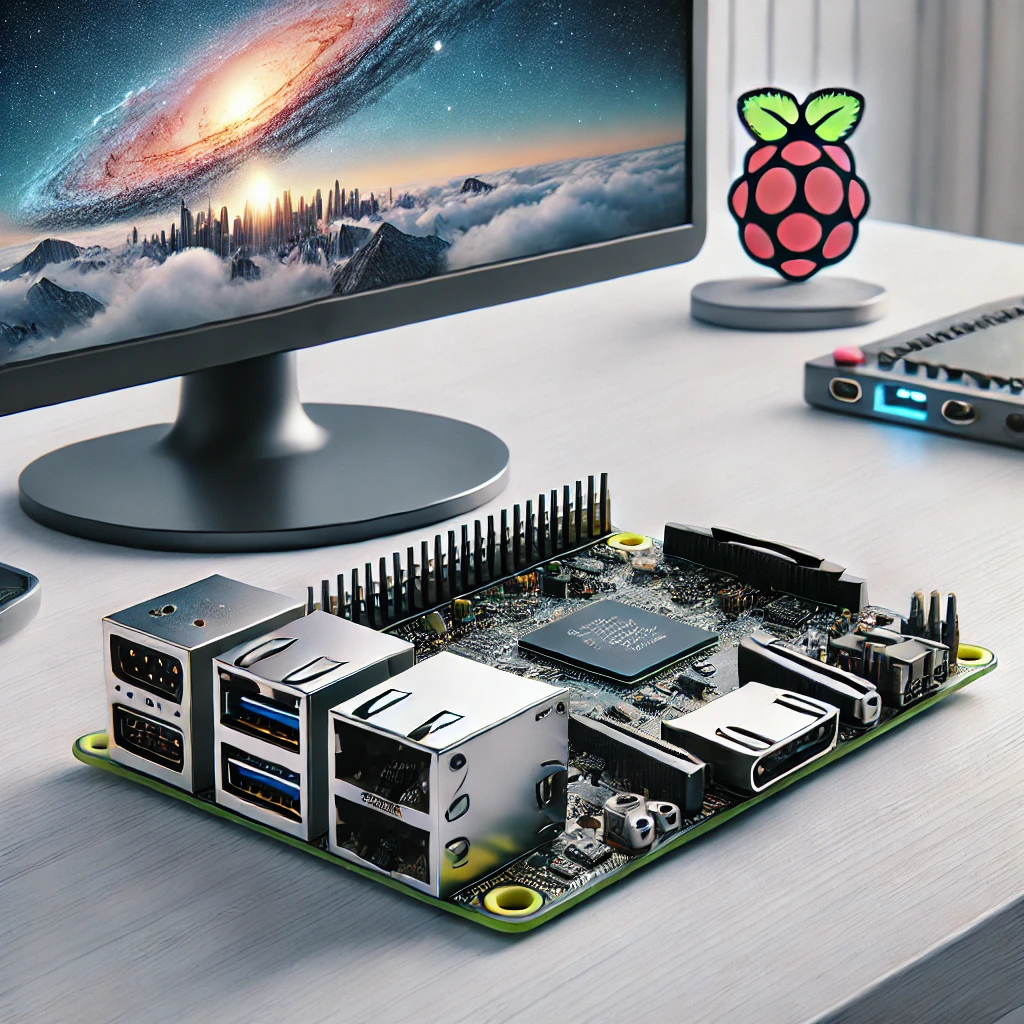Explore how Raspberry Pi 5’s enhanced specifications, including its quad-core processor and expandable storage, make it a perfect fit for blockchain applications. Learn how to run nodes, mine cryptocurrencies, host decentralized apps, and create private blockchain networks efficiently and cost-effectively.
The Raspberry Pi 5 marks a significant leap forward in the evolution of the Raspberry Pi series, offering increased processing power, enhanced graphics capabilities, and improved connectivity. Its robust specifications make it an ideal choice for blockchain applications, from running cryptocurrency nodes to supporting decentralized applications (dApps) and even mining on smaller, energy-efficient scales. In this article, we will take a closer look at the specifications of the Raspberry Pi 5 and explore how these features enable it to excel in blockchain environments.
1. Key Specifications of the Raspberry Pi 5
The Raspberry Pi 5 brings several major upgrades over its predecessors, positioning it as a powerful tool for more demanding applications like blockchain. Here are the key specifications that make the Raspberry Pi 5 stand out:
- Processor: Quad-Core Cortex-A76 (1.8 GHz) The Pi 5 is powered by a quad-core ARM Cortex-A76 processor clocked at 1.8 GHz, providing significantly faster performance than previous Raspberry Pi models. This processing power allows the Pi 5 to handle more intensive tasks, such as verifying blockchain transactions, running full nodes, or even managing decentralized networks.
- Memory Options: Up to 8GB RAM The Pi 5 offers configurations with 4GB or 8GB LPDDR4-4266 RAM, providing ample memory for tasks like running smart contracts, managing transaction data, and deploying lightweight blockchain networks. The higher RAM capacity also ensures smooth multitasking, enabling the Pi to simultaneously run several blockchain-related operations without lag.
- Graphics: VideoCore VII GPU The upgraded GPU not only enhances multimedia capabilities but also provides significant processing power for applications that require real-time data visualization and analysis—useful for visualizing blockchain transactions or interacting with decentralized applications.
- Storage: PCIe 2.0 Support for M.2 SSDs The addition of PCIe 2.0 support allows users to connect M.2 SSDs, providing faster data transfer rates and larger storage capacities, which are critical for blockchain nodes that store the entire ledger. Faster storage solutions also help minimize delays in data retrieval and transaction verification, ensuring smoother node performance.
- Dual 4K HDMI Display Support Raspberry Pi 5 can drive two 4K displays simultaneously, allowing for the visualization of blockchain transactions, mining operations, or network monitoring in real-time, making it easier for users to manage their blockchain activities effectively.
- Connectivity: USB 3.0, Gigabit Ethernet, and Wireless Options The Pi 5 includes two USB 3.0 ports, which enable faster data transfers between devices, essential for mining rigs or external storage solutions. Additionally, Gigabit Ethernet ensures a reliable, fast connection to blockchain networks, which is crucial for maintaining node uptime and ensuring seamless communication with the blockchain.
2. Why Raspberry Pi 5 is a Good Fit for Blockchain
Blockchain environments demand a combination of processing power, efficient data management, and energy-conscious operation. The Raspberry Pi 5 excels in all these areas, making it a strong contender for blockchain enthusiasts and developers. Here’s why:
- Low Power Consumption: Running blockchain nodes or mining rigs requires machines to be online continuously, which can quickly become costly with traditional hardware. The Raspberry Pi 5 is designed for low-power consumption, making it ideal for long-term operations while keeping energy costs to a minimum.
- Affordable and Scalable: At a fraction of the cost of traditional computing hardware, the Raspberry Pi 5 provides an affordable entry point for running multiple nodes or experimenting with blockchain technologies. Its modular nature allows users to scale operations as needed, whether by adding more Raspberry Pi units or upgrading components like storage.
- Edge Computing Capabilities: Raspberry Pi 5’s ability to process data locally without relying on cloud infrastructure makes it a great choice for decentralized applications (dApps) and smart contracts. The Pi 5’s edge computing features reduce latency, ensuring faster, more efficient transaction processing.
3. Blockchain Use Cases for Raspberry Pi 5
- Running Blockchain Nodes The Raspberry Pi 5’s improved processing power and storage capabilities make it suitable for running full or lightweight blockchain nodes. A full node downloads and verifies the entire blockchain, while a lightweight node verifies only part of it, making it less resource-intensive. Running a node helps maintain the security and decentralization of blockchain networks.
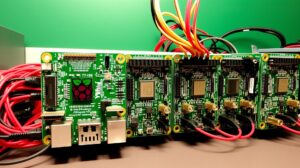
Example Use Case:
Bitcoin or Ethereum Full Node on Raspberry Pi 5
The Raspberry Pi 5 can be configured to run a full Bitcoin or Ethereum node, which contributes to the network’s integrity by validating transactions. Its energy-efficient design makes it an excellent option for users who want to support the network without incurring high electricity costs. By using external SSD storage, you can handle the large blockchain ledgers with minimal performance delays.
- Cryptocurrency Mining Although mining large cryptocurrencies like Bitcoin or Ethereum requires substantial computational power, Raspberry Pi 5 can be used for mining smaller or emerging cryptocurrencies that rely on less resource-intensive algorithms. Paired with USB mining hardware or external GPUs, the Pi 5 provides a low-cost, energy-efficient option for getting started with cryptocurrency mining.
Example Use Case:
Mining Altcoins with Raspberry Pi 5
Users can set up a Raspberry Pi 5 to mine altcoins that use Proof of Stake (PoS) or low-power Proof of Work (PoW) algorithms. By combining Pi 5 with external mining devices, users can contribute to these networks at a lower energy cost, making the Raspberry Pi 5 an attractive option for miners looking for energy efficiency.
- Hosting Decentralized Applications (dApps) Raspberry Pi 5 is well-suited for running decentralized applications (dApps) and smart contracts on platforms like Ethereum or EOS. These applications are the backbone of decentralized finance (DeFi) and other blockchain services. With its enhanced storage and processing capabilities, Pi 5 can handle dApp deployment while maintaining low operational costs.
Example Use Case:
Smart Contracts and dApps on Ethereum Using Raspberry Pi 5
Developers can use the Raspberry Pi 5 to deploy smart contracts and decentralized apps (dApps) on the Ethereum network. Whether it’s automating financial transactions, managing supply chains, or executing digital agreements, Raspberry Pi 5 provides the power and modularity needed to operate decentralized applications efficiently at a low cost.
- Creating Private Blockchain Networks Raspberry Pi 5 can be used to set up a private blockchain network for secure, decentralized data management in enterprise environments. Private blockchains are popular in industries like healthcare, finance, and supply chain management, where data security and transparency are crucial.
Example Use Case:
Private Supply Chain Blockchain on Raspberry Pi 5
A Raspberry Pi 5 can be configured to build a private blockchain network that tracks goods as they move through a supply chain. This ensures transparency and accountability, as the blockchain ledger is immutable and cannot be tampered with. The modular capabilities of Pi 5 make it easy to integrate with sensors, RFID tags, and other IoT devices that collect data at each stage of the supply chain.
4. Setting Up Blockchain Projects with Raspberry Pi 5
Setting up a blockchain node, dApp, or mining operation on Raspberry Pi 5 is relatively straightforward, thanks to its modular design and availability of blockchain software.
- Running a Node: Install a blockchain software like Bitcoin Core or Geth (for Ethereum) on the Raspberry Pi 5. Be sure to connect external SSD storage if running a full node to handle the ledger size.
- Mining Setup: Pair Raspberry Pi 5 with USB mining hardware or lightweight GPU miners. Install cryptocurrency mining software, configure the wallet address, and start mining altcoins.
- dApp Deployment: Set up a Raspberry Pi 5 server and deploy smart contracts using platforms like Ethereum. With frameworks such as Web3.js and Solidity, you can build and launch dApps directly from your Raspberry Pi.
The Raspberry Pi 5’s enhanced processing power, modularity, and energy efficiency make it a highly versatile tool for blockchain applications. Whether you’re running full nodes, mining cryptocurrencies, hosting decentralized apps, or setting up private blockchains, Raspberry Pi 5 delivers a powerful and cost-effective solution. Its ability to scale, combined with its low power requirements, makes it ideal for blockchain enthusiasts and developers looking to contribute to decentralized ecosystems.

